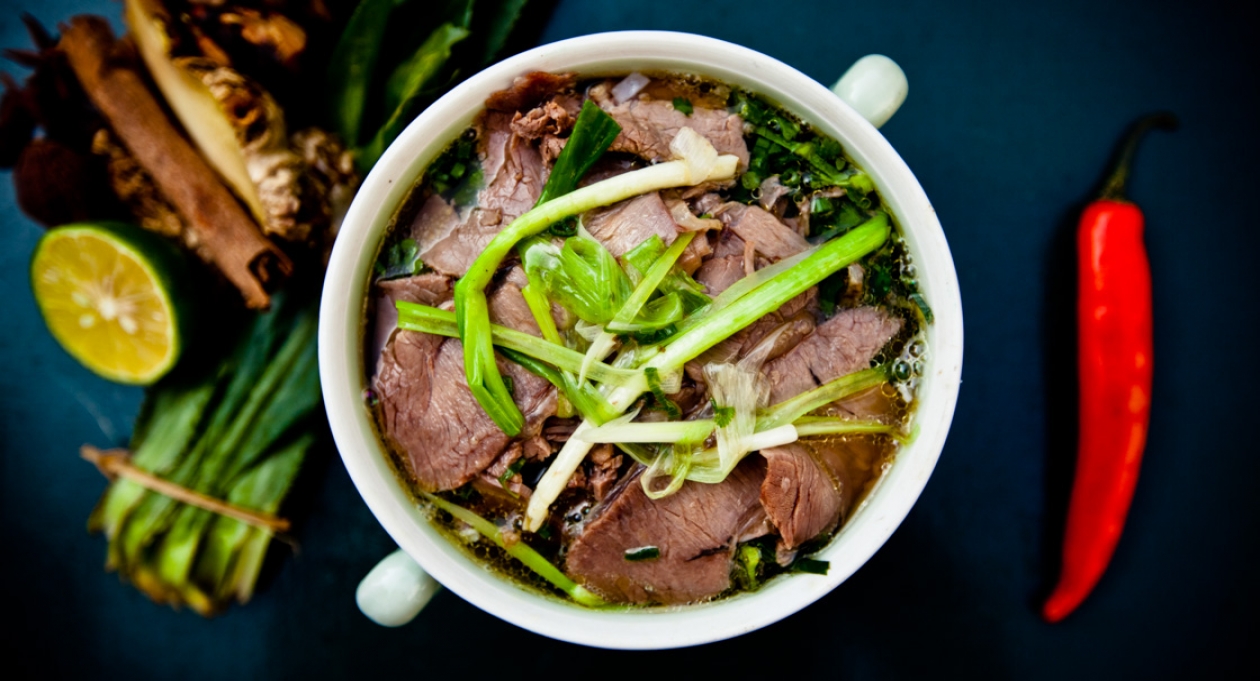Is Pho Vietnamese or Thai? Unraveling the Culinary Origins
Pho and Thai cuisine both boast a rich culinary heritage, captivating food enthusiasts worldwide. However, there is often confusion about the origins of pho and whether it is Vietnamese or Thai. In this article, we will delve into the history and cultural context of pho and Thai cuisine, shedding light on their distinct identities and clarifying the true roots of pho.
Pho is an iconic Vietnamese dish that has become synonymous with the country's cuisine. It is a hearty noodle soup consisting of aromatic broth, rice noodles, and various toppings. Pho originated in Northern Vietnam during the early 20th century and quickly gained popularity throughout the country. It is deeply ingrained in Vietnamese culinary traditions and reflects the country's history, culture, and regional influences.

Pho is an iconic Vietnamese dish
Thai cuisine, renowned for its bold and vibrant flavors, is a product of centuries of culinary evolution. It showcases a harmonious blend of sweet, sour, salty, and spicy tastes. Thai cuisine is diverse, with distinct regional variations reflecting the country's geography and cultural diversity. From aromatic curries to fragrant stir-fries, Thai cuisine offers a wide array of culinary delights.
Despite their neighboring geographical locations, pho and Thai cuisine are distinct and separate culinary entities. Pho is firmly rooted in Vietnamese culture and cuisine, while Thai cuisine has its own unique traditions and influences. While both cuisines incorporate noodles and aromatic broths, the flavor profiles, ingredients, and preparation techniques set them apart.
Pho typically features beef or chicken as the main protein, along with herbs, bean sprouts, and lime for garnishing. The broth is infused with spices like star anise, cloves, and cinnamon, creating a distinct flavor profile. On the other hand, Thai cuisine is known for its use of fresh herbs, such as lemongrass, basil, and cilantro, along with spicy chili peppers, fish sauce, and coconut milk, resulting in a unique explosion of flavors.
Pho holds deep cultural significance in Vietnam. It is considered a national dish, a symbol of Vietnamese culinary heritage, and a source of national pride. Pho reflects the resilience and resourcefulness of the Vietnamese people, as it evolved from a combination of French and Chinese influences. Thai cuisine, too, has cultural significance in Thailand, with its flavors reflecting the country's history, traditions, and way of life.

(Pho is from Vietnamese)
While both pho and Thai cuisine offer delightful culinary experiences, it is important to appreciate and respect their individual origins and characteristics. Recognizing the unique cultural contexts behind each cuisine allows for a deeper understanding and enjoyment of their flavors and traditions.
In conclusion, pho is unquestionably Vietnamese in origin, deeply embedded in the country's culinary culture. Thai cuisine, with its own diverse flavors and influences, stands as a separate and distinct culinary tradition. By embracing the culinary distinctions between pho and Thai cuisine, we can better appreciate the richness and diversity of Southeast Asian culinary heritage.